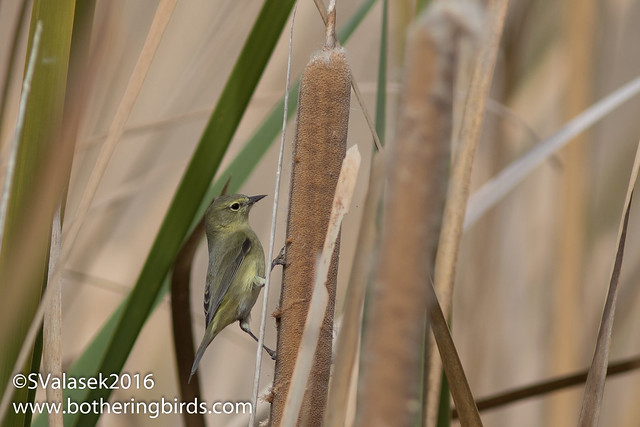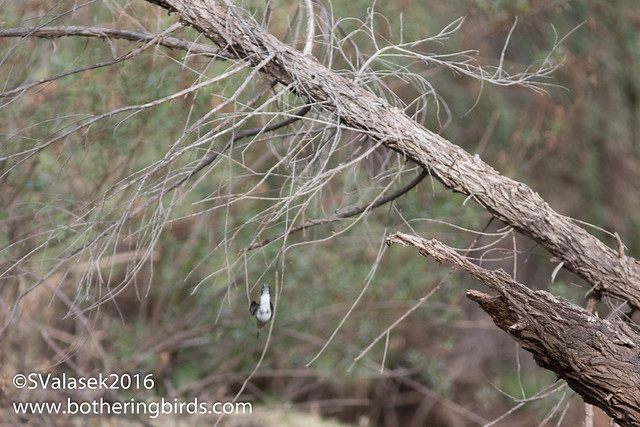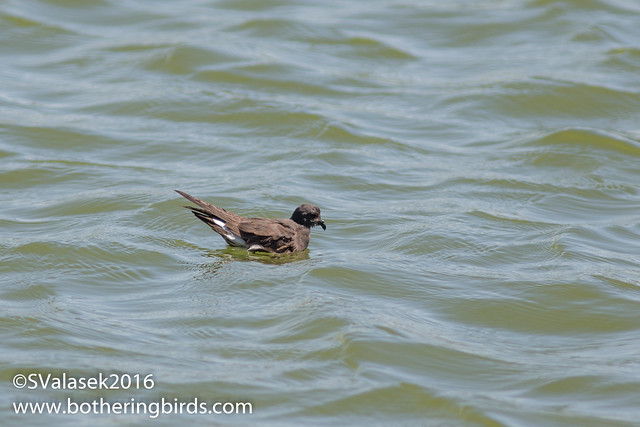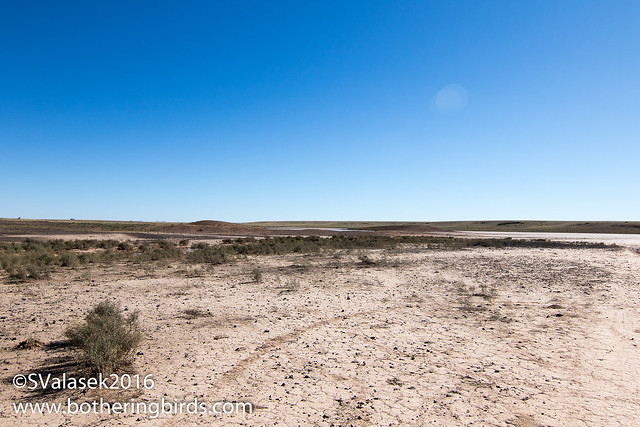Happy Holidays everyone! I must have been on the naughty list this year because I didn't get the Canon 1Dx Mk2, 200-400mm lens or new Binoculars that I asked for... Oh well. ; )
Yesterday I took advantage of my wife being off from work and the kids being on school holiday to take a trip down to the southern part of Arizona and do some birding in the Santa Rita mountains. I usually visit Madera Canyon, but I wanted to try some new areas. So right next door is Florida Canyon, which is one of the dependable locations for Rufous-Capped Warblers in the USA, along with some other species that would be lifers for me, and them depending on the time, I would try for some other birds in the area.
Due to the canyon walls and it being winter, I was told that the floor of the canyon would be in shadow until 9am and it wouldn't be worth getting there any earlier than that. So I slept in a little later than I would have other-wise, and got down there just about then. The approach to the Florida Trail carpark follows the drive to Madera Canyon (which was closed due to recent snowfall). There's a turn-off of the pavement just before the long drive up to Madera. The dirt roads were fine and easily drive-able in my wife's VW Passat.
I was driving along when I saw a dark shape on the road in front of me. I was expecting a raven, but instead it was a Golden Eagle. The bird was huge. I jumped out of the car to get a few photos before it flew off down the road. The white patch on the tail is indicative of a juvenile bird.
 |
| Golden Eagle - Pima County, Arizona |
 |
| Golden Eagle - Pima County, Arizona |
After some confusion on my part, the location of
Florida Canyon on Google Maps is not where the trail-head actually is. You really want to search for the
Santa Rita Experimental Range to get to the right place. There is a parking area just before the gate and a marked trail leading off left (northeast) which quickly crossed a stream that you follow up the canyon. A short ways up the trail is a large metal gate that you pass through. I followed the trail up with the creek on my right and entered an area of steep walls with some long buffalo grass growing. Not much further up some Prickly Pears were growing right up to the trail. I noticed some birds in this area and saw some gnatcatchers and a Cactus Wren nearby.
 |
| Cactus Wren - Florida Canyon, Pima County Arizona |
And then I saw some small birds hopping from grass clump to grass clump a bit up the canyon wall. Once I got a clear view I saw bright yellow breast with red and white striped head, a Rufous-Capped Warbler for sure! I managed some blurry photos, but nothing great. I stood watching the other birds when I heard some activity from behind me, across the stream and on the opposite wall of canyon. A Canyon Wren was out in plain view calling away and some sparrows were also nearby.
 |
| Canyon Wren - Florida Canyon, Pima County Arizona |
There were also House Wrens and Bewick's Wrens along the trail, which meant a 4 wren day.
Another bird that I was hoping to see was a Black-Chinned Sparrow. I had seen and photographed these in Albuquerque, but were not on my eBird lifelist for some reason. But here was one just in front of me that popped up after a bit of pshing.
 |
| Black-Chinned Sparrow - Florida Canyon, Pima County Arizona |
But sparrows and wrens weren't the only birds on that side of the stream. I saw another pair of Rufous-Capped Warblers moving there too, which made 4 in just this one spot.
 |
| Rufous-Capped Warbler - Florida Canyon, Pima County Arizona |
Look at those colors! These may be the best looking warbler that I've seen yet. And here's an example of how they looked, deep in the grass trying to hide.
 |
| Rufous-Capped Warbler - Florida Canyon, Pima County Arizona |
I was so excited to get these good looks. I ran into some other birders along the trail, including a guide and her client, and pointed out where I saw the warblers and they were able to get some quick looks. And then the guide did me a favor and heard a Black-Capped Gnatcatcher in the same area. We manged to see it on an ocotillo and I got a lousy photo of it, but it's a rare bird for the USA and another tick for me.
 |
| Black-Capped Gnatcatcher - Florida Canyon, Pima County Arizona |
I explored further up the trail, but didn't see or hear anything else so I turned around and headed back down the trail to try somewhere else. I did make a note of where I saw the warbles and gnatcatcher, which you can find
HERE.
I had a few options of where to go next. I was close to Madera Canyon, but there were signs saying that it was closed on the approach, so I didn't want to go up there and find it snowed in still. There was also a Brown Thrasher a bit south in Tubac. But what I really wanted to try and see the Green Kingfisher at Patagonia Lake State Park. It was another 90 minutes south of me, but I was as close as I was going to get in a while, so I decided to go for it.
I arrived in the afternoon and found a parking place at the start of the birding trail at
Patagonia Lake SP. I knew that kingfisher was being seen along Sonoita Creek at the northeast corner of the lake. I made my way to the creek as fast as possible without taking too much time looking at the birds along the way. But I did see a nice Orange-Crowned Warbler appearing to feed from a cattail.
 |
| Orange-Crowned Warbler - Patagonia Lake SP, Santa Cruz County Arizona |
And I finally got an okay photo of a Ladder-Backed Woodpecker.
 |
| Ladder-Backed Woodpecker - Patagonia Lake SP, Santa Cruz County Arizona |
I'm learning that it's typical in winter here that Ruby Crowned Kinglets are going to be everywhere. Here's one with a hot of it's ruby crown.
 |
| Ruby-Crowned Kinglet - Patagonia Lake SP, Santa Cruz County Arizona |
One of the surprises was an Eastern Phoebe that landed high up above me in a tree. This is a continuing bird here and a nice surprise.
 |
| Eastern Phoebe - Patagonia Lake SP, Santa Cruz County Arizona |
I finally made it to the stream near to where it empties into the lake. I wasn't sure where the kingfisher was being seen, but I thought that it was further upstream. I was there just once before in the springtime while looking for Elegant Trogons. I followed the stream as well as I could sometimes using the trail, sometimes bushwacking. I didn't know much about Green Kingfishers, but I figured that they were similar to the Common Kingfishers of Ireland and not the Belted Kingfishers of the USA. Belted Kingfishers tend to stake-out a pond or lake and dive into the water from a high perch. Common Kingfishers travel up and down waterways perching on low branches above the water. So I took my time and scanned likely spots while walking up the creek. I also planned on picking a spot and waiting for the bird to fly by.
I ran into some a group of birders who had seen the bird up aways, so I got excited and was determined to see it. I found a spot where I could see a fair bit of the creek and waited for 30 minutes without seeing anything but more kinglets. It was getting late and would have to turn back soon, but I wanted to walk just a ways further before quitting. But still no kingfisher, so I turned around and walked maybe 30 feet when a I spotted a white and green streak flying by me! I turned around and located the bird sitting on a branch over the water.
 |
| Green Kingfisher - Patagonia Lake SP, Santa Cruz County Arizona |
I watched and followed the bird as it continued to hunt over the water, right back to where I had just turned around to give up.
 |
| Green Kingfisher - Patagonia Lake SP, Santa Cruz County Arizona |
 |
| Green Kingfisher - Patagonia Lake SP, Santa Cruz County Arizona |
 |
| Green Kingfisher - Patagonia Lake SP, Santa Cruz County Arizona |
I got to watch it dive off of a perch and hit the water, and then fly off and out of site. I was so happy with getting to see this great bird and walked back to my car with a smile on my face. The three hour drive back to Gilbert was so worth it.
Trip details:
Florida Canyon - Easy drive up to the parking area via paved and then dirt, but well maintained, roads. Trail clearly marked. Quick stream crossing and then some elevation gain along mountain stream. Mobile data reception was good at the parking lot and continued up the path (I use T-Mobile and Sprint Towers via Google Fi). No restrooms and no fees associated.
Patagonia Lake State Park - Well maintained state park. Developed camp sites on the approach to the birding trail parking area. There is a $15 entrance fee per carload to visit the park. Modern restrooms are located on the approach to the birding trail and at the beach area. There's also a small convenience store at the park. The birding trail itself is mainly flat with a steep area with stairs near the beginning. Expect muddy conditions and loads of cow manure. The park offers guided walking birding tours on Monday and Friday mornings at 9am and avian boat tours on Saturday and Sunday mornings. Details can be found
HERE.
Something silly to toss in here at the end. I've decided to start wearing camouflage. I don't know if I'm making things up or not, but I think that I got closer to some of the birds than than I normally would have. I'm going to keep going and see if there's truth there or not. If anyone knows of a way to test this idea, let me know.
Cheers,
Thanks for making it this far and Happy Holidays again.
















































